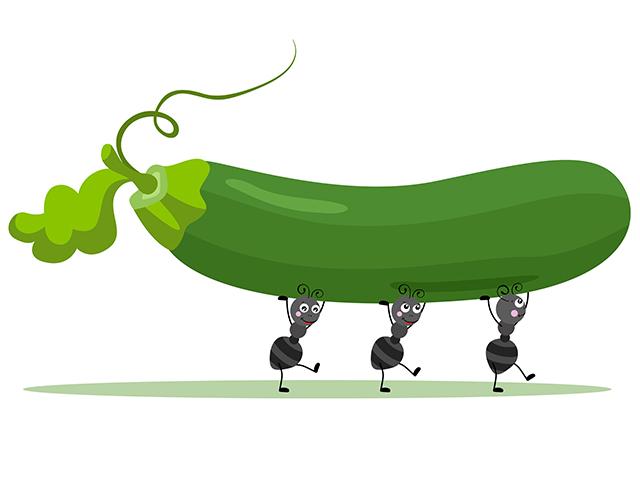Inside the Market
Facing Ag's Challenges in 2023 and Beyond
In the November issue of Progressive Farmer, I talked about big challenges agriculture faces in the years ahead trying to maintain the miracle of increasing food production for a world population that continues to grow. Going from 1 billion in 1804 to 8 billion people today has required massive resources and production on a scale that could not have been predicted 218 years ago. It may sound odd, but the innovative path that got us here has similarities to the workings of an ant colony.
Biologists explain that ants in a colony communicate as they scurry about, exchanging chemicals and information with their antennae. No single ant has access to the big picture or runs the show. Through their interactions, the colony finds where the food is and where the threats are to avoid. This decentralized busyness allows the colony great flexibility in adapting to changing conditions and enables the colony to thrive. The hint of a greater intelligence at work reminds me a bit of the "invisible hand" Scottish philosopher and economist Adam Smith first described in 1759.
Deborah Gordon, professor of biology at Stanford and author of two books on ants, explains the little critters have been around for 130 million years, so their strategy of staying active and exchanging information seems to be working. (See https://www.wired.com/… for more).
Here in 2023, concerns about climate change are leading a push to find new fuels, making it difficult to foresee how the world will be able to feed 10 billion, 12 billion or more in the years ahead. The current infrastructure, which struggles to comfortably feed 90% of today's 8 billion residents, is heavily dependent on fossil fuels, not only for tractors and the transportation of grain, but also for the fertilizer and chemicals that make higher yields possible. Finding suitable fuels to carry that big of a load is no easy matter, especially with 80 million new mouths being added each year to feed.
P[L1] D[0x0] M[300x250] OOP[F] ADUNIT[] T[]
I don't know if future solutions will include hydrogen fuel or nitrogen-fixing microbes, or something we don't yet know about. I do suspect as 8 billion-plus of us keep working and interacting, we will find new ways of making do with what we have. How many of us can this world support? We have yet to find out.
To realize that this human ant colony was not very well fed when there were only 1 billion of us 218 years ago and now is able to much better feed 8 billion of us is a miracle in my book. I'm not convinced it gets the recognition it deserves.
No one today can yet explain how 10 billion or more will be fed in the not-so-distant future, but like the ants, the answer never has been in the brain of any one of us. If there is a solution, it will likely be found in the doing. Maybe the ancient text had the right idea all along: "Go to the ant, you sluggard; consider its ways and be wise." (Proverbs 6:6). Sounds like the same kind of advice we would have heard from our grandparents in days gone by.
**
For More Information:
-- Read Todd's blog at https://about.dtnpf.com/…
-- You may email Todd at todd.hultman@dtn.com, or call 402-255-8489.
[PF_0123]
(c) Copyright 2023 DTN, LLC. All rights reserved.




